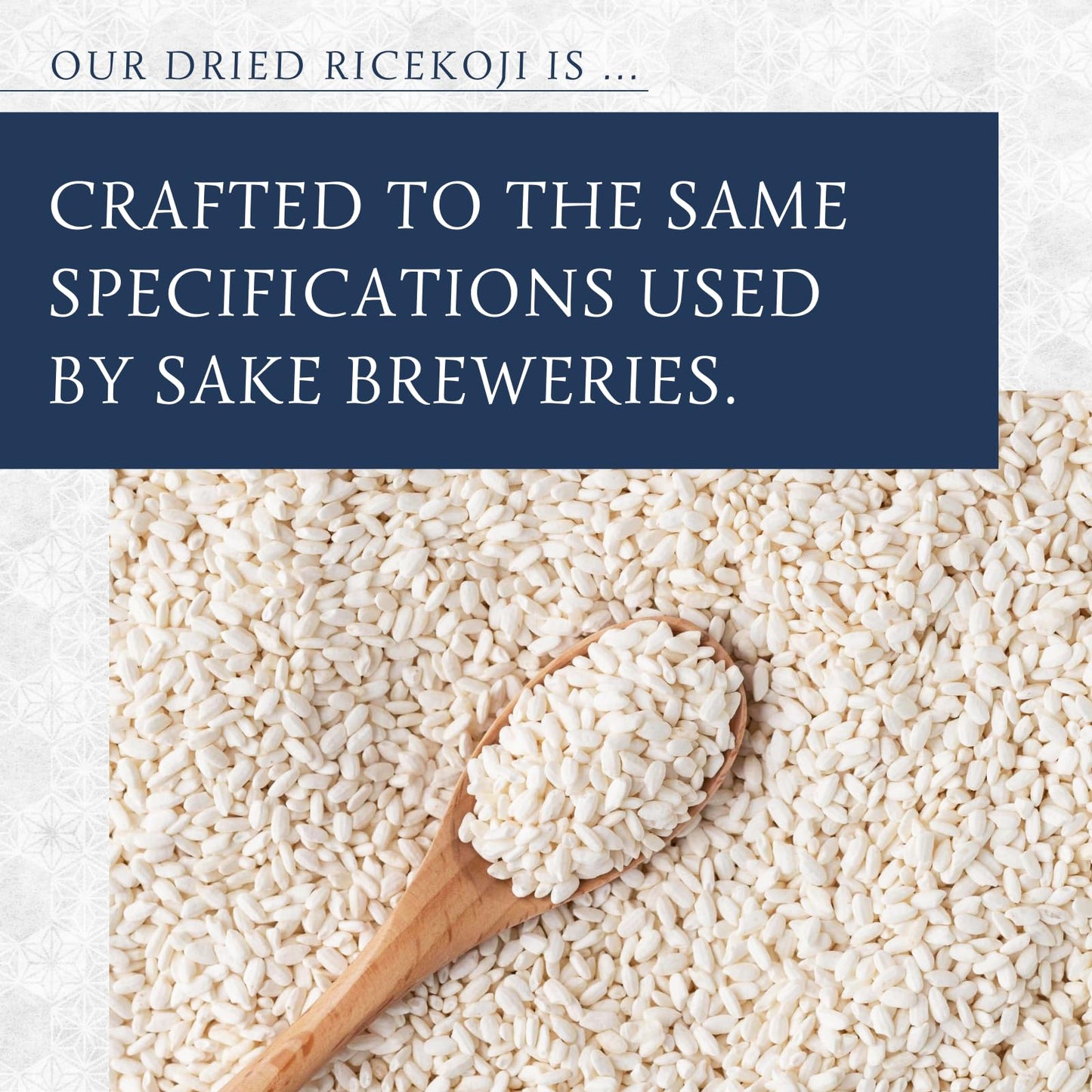You will not be allowed to compare more than 4 products at a time
View compareProduct Description
Our Dried Rice Koji Is Crafted From Carefully Cultivated Japanese Rice, Grown Using Natural Methods Chosen By Farmers To Ensure Exceptional Quality. This Koji Is Particularly Well-Suited For Making Shio-Koji Or Amazake, Offering The Perfect Foundation For Fermentation. We Are Committed To Sharing The Richness Of Koji And Japanese Hakko (Fermentation) Culture, With The Aim Of Bringing ''Deliciousness'' And ''Happiness'' To Our Customers, And Ultimately Fostering A Culture Of Fermentation With Rice Koji.
Frequently Asked Questions
- Q: What is rice koji and how is it used in cooking? A: Rice koji is a traditional Japanese ingredient made from steamed rice inoculated with koji mold. It is primarily used in fermentation processes, such as making shio-koji, amazake, and various koji-based seasonings, enhancing the flavor of dishes while promoting healthy fermentation.
- Q: Is the Premium Dried Rice Koji safe for children? A: Yes, the Premium Dried Rice Koji is made without any synthetic additives, making it a safe and suitable option for everyone, including children. It supports a healthy and delicious culinary experience.
- Q: How should I store the dried rice koji after opening? A: To maintain the freshness of the dried rice koji, seal the package tightly after each use and store it in a dry place. It is best to consume it as soon as possible, ideally within one year from the manufacturing date.
- Q: Can I use this rice koji for making homemade miso or soy sauce? A: While dried rice koji is excellent for making shio-koji and amazake, it is also versatile for various fermentation processes, including koji-based seasonings. However, making traditional miso or soy sauce typically requires additional specific ingredients and processes.
- Q: What are the benefits of using naturally cultivated Japanese rice for koji? A: Using naturally cultivated Japanese rice for koji ensures exceptional quality and flavor. The rice is grown using traditional farming methods, which contribute to a richer taste and optimal fermentation properties, enhancing the overall cooking experience.










